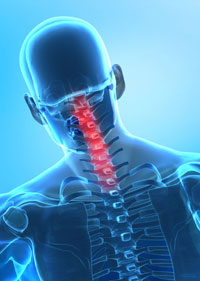Many patients I see suffer from neck and shoulder pain. It turns out a surprisingly large number of them also have frequent headaches. Sometimes they are very dull and in the background and other times it feels like someone is playing drums on their head. When their neck and shoulder pain is worse the headache tends to intensify greatly.
There is a lesser known category of headaches called Cervicogenic Headaches. This literally means headaches coming from the neck. Often these types of headaches are mistakenly lumped in with the tension-type headache, a common type of headache that can also be accompanied with muscle tenderness in the neck, however is not directly caused by the neck.
What causes this type of headache?
Cervicogenic headaches occur due to referred pain from the bony or soft tissue structures in the neck. Nerves that carry sensation information from the neck and shoulder region (upper cervical nerve roots) share connections with nerves that supply the head and face (cranial nerves). These connections allow for a two-way street of sensation and pain signals. As a result injured structures in the neck can be interpreted by the brain as neck pain, a headache, or both.

The joints in the upper cervical spine and base of the skull are frequently the main cause in patients that suffer from this type of headache. They are easily susceptible to irritation both in cases of acute injury and repetitive wear and tear.
For those that suffer from chronic headaches, the neck can be the primary cause in up to 20% of cases and is four times more prevalent in women. Symptoms of a cervicogenic headache can often overlap with other categories of headache such as tension-type or migraines. This can make accurate diagnosis difficult and delay appropriate treatment.
What is the best treatment for this type of headache?
Treatment of cervicogenic headaches can include medication, chiropractic treatment, rehabilitation, anesthetic injections, and in rare cases surgical interventions. Medication alone has been shown to be largely ineffective and provides only moderate benefits. Chiropractic manipulative therapy in combination with appropriate rehabilitation has been shown to be effective in reducing the frequency, intensity, and duration of this type of headache.
– By Dr. Rav Nagra, D.C.

